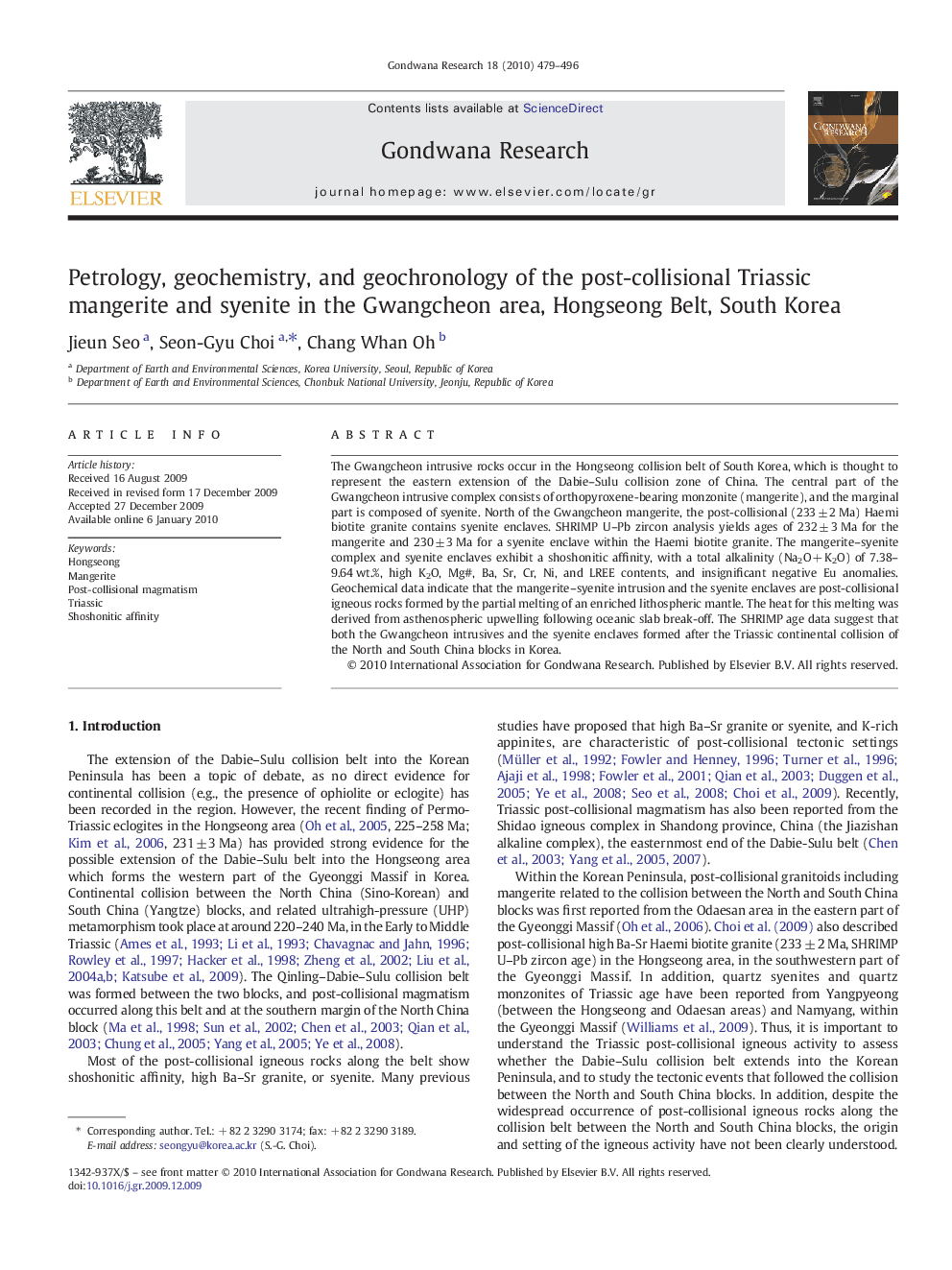| کد مقاله | کد نشریه | سال انتشار | مقاله انگلیسی | نسخه تمام متن |
|---|---|---|---|---|
| 4727071 | 1640148 | 2010 | 18 صفحه PDF | دانلود رایگان |

The Gwangcheon intrusive rocks occur in the Hongseong collision belt of South Korea, which is thought to represent the eastern extension of the Dabie–Sulu collision zone of China. The central part of the Gwangcheon intrusive complex consists of orthopyroxene-bearing monzonite (mangerite), and the marginal part is composed of syenite. North of the Gwangcheon mangerite, the post-collisional (233 ± 2 Ma) Haemi biotite granite contains syenite enclaves. SHRIMP U–Pb zircon analysis yields ages of 232 ± 3 Ma for the mangerite and 230 ± 3 Ma for a syenite enclave within the Haemi biotite granite. The mangerite–syenite complex and syenite enclaves exhibit a shoshonitic affinity, with a total alkalinity (Na2O + K2O) of 7.38–9.64 wt.%, high K2O, Mg#, Ba, Sr, Cr, Ni, and LREE contents, and insignificant negative Eu anomalies. Geochemical data indicate that the mangerite–syenite intrusion and the syenite enclaves are post-collisional igneous rocks formed by the partial melting of an enriched lithospheric mantle. The heat for this melting was derived from asthenospheric upwelling following oceanic slab break-off. The SHRIMP age data suggest that both the Gwangcheon intrusives and the syenite enclaves formed after the Triassic continental collision of the North and South China blocks in Korea.
Journal: Gondwana Research - Volume 18, Issues 2–3, September 2010, Pages 479–496